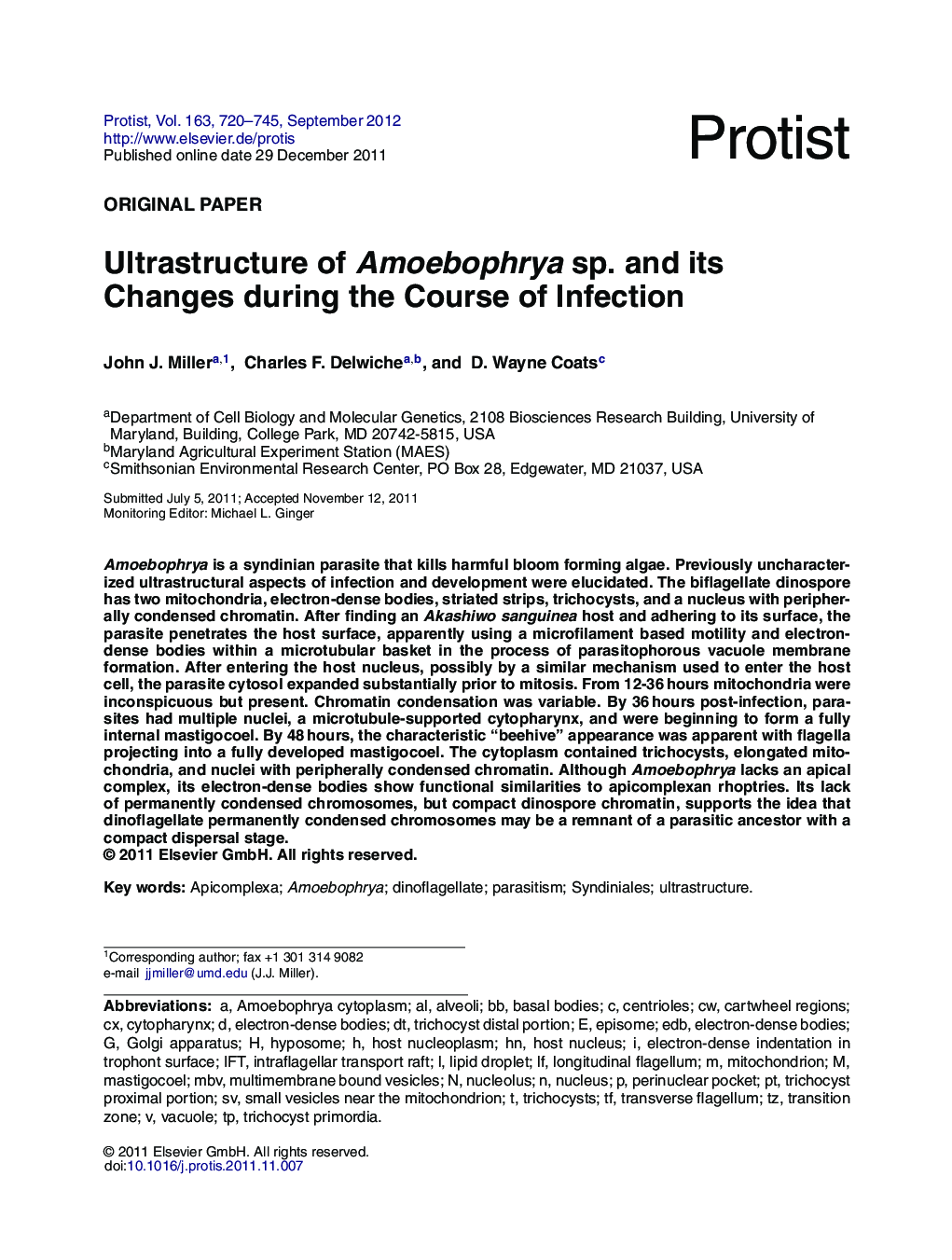| کد مقاله | کد نشریه | سال انتشار | مقاله انگلیسی | نسخه تمام متن |
|---|---|---|---|---|
| 10879085 | 1076536 | 2012 | 26 صفحه PDF | دانلود رایگان |
عنوان انگلیسی مقاله ISI
Ultrastructure of Amoebophrya sp. and its Changes during the Course of Infection
دانلود مقاله + سفارش ترجمه
دانلود مقاله ISI انگلیسی
رایگان برای ایرانیان
کلمات کلیدی
MBVtrichocystsCentriolesIFTalveoli - آلوئولAmoebophrya - آمیبوفریاBasal bodies - بدن پایهEpisome - حادثهVacuole - خلاص شدن از شرGolgi apparatus - دستگاه Golgiultrastructure. - فراصوتlipid droplet - قطره چربیEDB - محاسبهTransition zone - منطقه انتقالMitochondrion - میتوکندریونApicomplexa - هاگ داران، اپیکامپلکساNucleus - هستهNucleolus - هستکParasitism - پارازیتیسمDinoflagellate - چرخانتاژکداران، داینوفلاژلهها
موضوعات مرتبط
علوم زیستی و بیوفناوری
علوم کشاورزی و بیولوژیک
علوم کشاورزی و بیولوژیک (عمومی)
پیش نمایش صفحه اول مقاله

چکیده انگلیسی
Amoebophrya is a syndinian parasite that kills harmful bloom forming algae. Previously uncharacterized ultrastructural aspects of infection and development were elucidated. The biflagellate dinospore has two mitochondria, electron-dense bodies, striated strips, trichocysts, and a nucleus with peripherally condensed chromatin. After finding an Akashiwo sanguinea host and adhering to its surface, the parasite penetrates the host surface, apparently using a microfilament based motility and electron-dense bodies within a microtubular basket in the process of parasitophorous vacuole membrane formation. After entering the host nucleus, possibly by a similar mechanism used to enter the host cell, the parasite cytosol expanded substantially prior to mitosis. From 12-36Â hours mitochondria were inconspicuous but present. Chromatin condensation was variable. By 36Â hours post-infection, parasites had multiple nuclei, a microtubule-supported cytopharynx, and were beginning to form a fully internal mastigocoel. By 48Â hours, the characteristic “beehive” appearance was apparent with flagella projecting into a fully developed mastigocoel. The cytoplasm contained trichocysts, elongated mitochondria, and nuclei with peripherally condensed chromatin. Although Amoebophrya lacks an apical complex, its electron-dense bodies show functional similarities to apicomplexan rhoptries. Its lack of permanently condensed chromosomes, but compact dinospore chromatin, supports the idea that dinoflagellate permanently condensed chromosomes may be a remnant of a parasitic ancestor with a compact dispersal stage.
ناشر
Database: Elsevier - ScienceDirect (ساینس دایرکت)
Journal: Protist - Volume 163, Issue 5, September 2012, Pages 720-745
Journal: Protist - Volume 163, Issue 5, September 2012, Pages 720-745
نویسندگان
John J. Miller, Charles F. Delwiche, D. Wayne Coats,